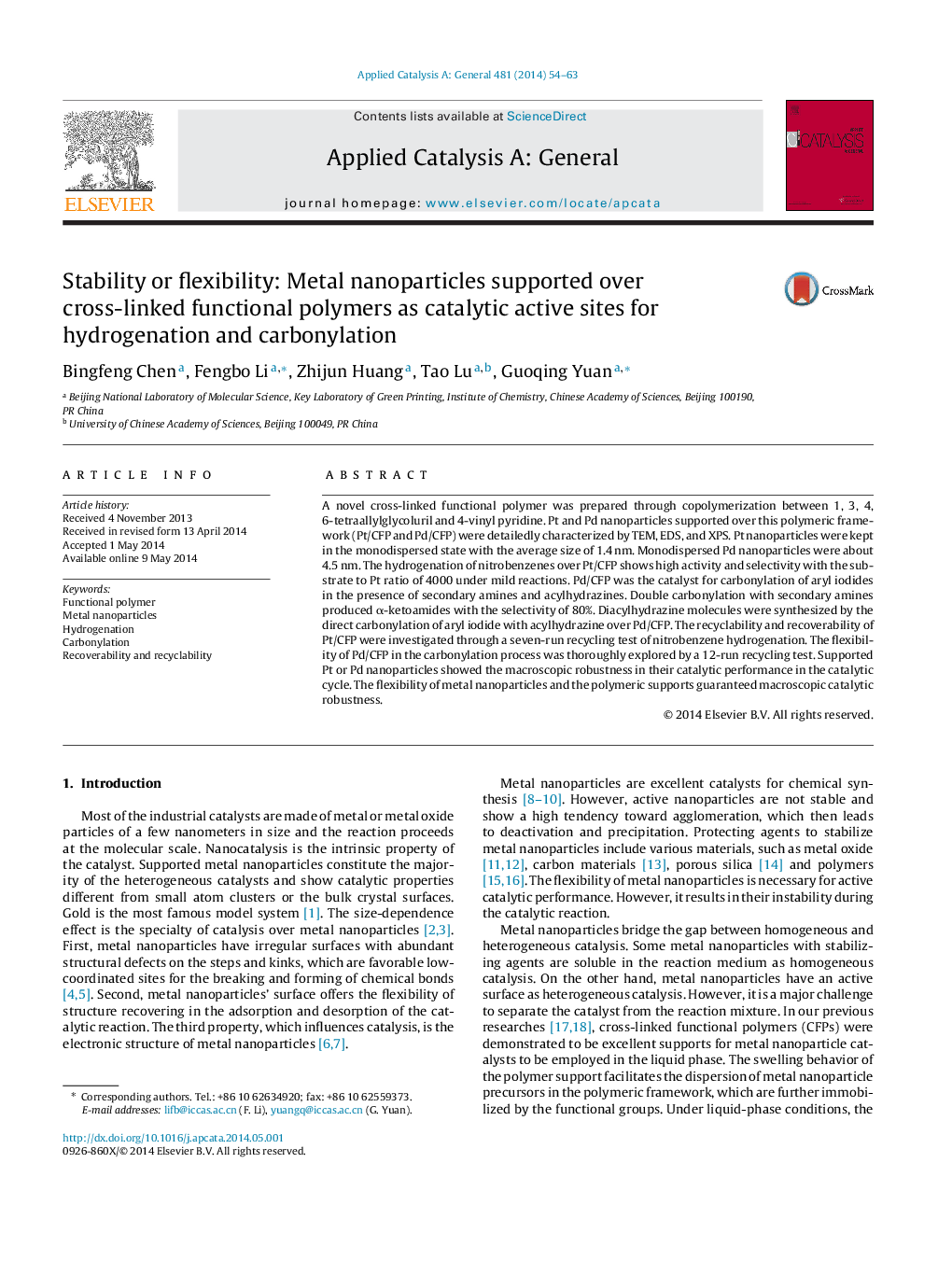| Article ID | Journal | Published Year | Pages | File Type |
|---|---|---|---|---|
| 39876 | Applied Catalysis A: General | 2014 | 10 Pages |
•A cross-linked functional polymer was prepared by 1, 3, 4, 6-tetraallylglycoluril.•Pt/CFP shows excellent catalytic performance in hydrogenation of nitrobenzenes.•The carbonylation of iodobenzene over Pd/CFP gives double-carbonylation products.•Supported Pt and Pd nanoparticles show high macroscopic catalytic robustness.
A novel cross-linked functional polymer was prepared through copolymerization between 1, 3, 4, 6-tetraallylglycoluril and 4-vinyl pyridine. Pt and Pd nanoparticles supported over this polymeric framework (Pt/CFP and Pd/CFP) were detailedly characterized by TEM, EDS, and XPS. Pt nanoparticles were kept in the monodispersed state with the average size of 1.4 nm. Monodispersed Pd nanoparticles were about 4.5 nm. The hydrogenation of nitrobenzenes over Pt/CFP shows high activity and selectivity with the substrate to Pt ratio of 4000 under mild reactions. Pd/CFP was the catalyst for carbonylation of aryl iodides in the presence of secondary amines and acylhydrazines. Double carbonylation with secondary amines produced α-ketoamides with the selectivity of 80%. Diacylhydrazine molecules were synthesized by the direct carbonylation of aryl iodide with acylhydrazine over Pd/CFP. The recyclability and recoverability of Pt/CFP were investigated through a seven-run recycling test of nitrobenzene hydrogenation. The flexibility of Pd/CFP in the carbonylation process was thoroughly explored by a 12-run recycling test. Supported Pt or Pd nanoparticles showed the macroscopic robustness in their catalytic performance in the catalytic cycle. The flexibility of metal nanoparticles and the polymeric supports guaranteed macroscopic catalytic robustness.
Graphical abstractFigure optionsDownload full-size imageDownload high-quality image (161 K)Download as PowerPoint slide
